Romania profile - Timeline
- Published
A chronology of key events:
1600-1601 - The three historic principalities of Romania - Transylvania, Moldavia and Wallachia - are briefly united under one ruler, Michael the Brave. They had been under Habsburg and Ottoman domination.
1683 - The Habsburgs recapture Transylvania from the Ottoman Empire.
1715 - Phanariot Greek governors begin to rule Moldavia and Wallachia on behalf of the Ottoman Empire, and launch administrative reforms.
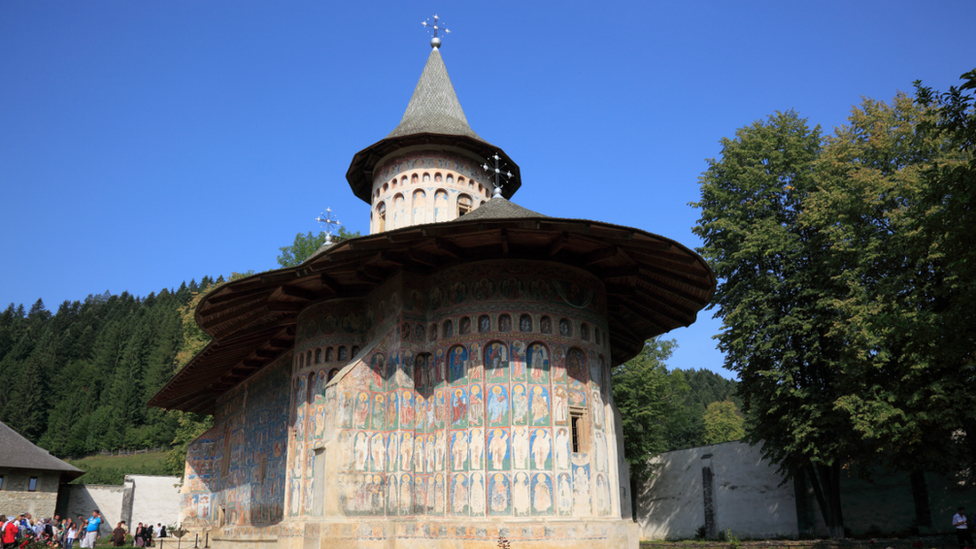
Romanian church architecture is often very colourful
1821 - Russia oversees the administration of Moldavia and Wallachia. Phanariot rule ends, and native Romanian rulers steadily gain influence.
1834 - Moldavia and Wallachia adopt a unified basic constitution, the Reglamentul Organic, which provides for their eventual unification.
1856 - Russian control over Moldavia and Wallachia ends with Moscow's defeat in the Crimean War.
Independence
1859 - Prince Alexandru Ioan Cuza is proclaimed prince of both Moldavia and Wallachia, which unite as Romania in 1862.
1866 - Landed interests and disgruntled liberal politicians force the increasingly authoritarian Prince Cuza's abdication. Parliament invites the German prince Karl of Hohenzollern-Sigmaringen to succeed him.
1877-1878 - Romania wins full independence from the Ottoman Empire by siding with Russia in the Russo-Turkish War. It also acquires a coastline on the Danube delta.
1881 - Romania becomes a kingdom.
1904 - The oil industry takes off with the opening of the first refinery.
1914 - King Carol's death ends Romania's alliance with the Central Powers - Germany and Austria. His nephew Ferdinand takes Romania into World War I on the Allied side in 1916.
1918 - As part of the peace settlement at the end of the war, Romania virtually doubles in size and population.
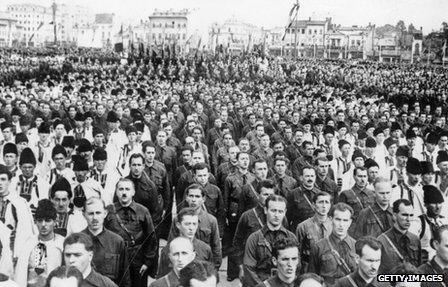
Green-shirted members of the fascist Iron Guard stand on parade in Bucharest
1930s - Rise of fascist "Iron Guard" mass movement.
1940 - General Ion Antonescu seizes power, and allies Romania with Nazi Germany.
1944 - Romania switches sides as Soviet forces close in. A Soviet-backed government is installed the following year.
Communist takeover
1947 - Romania regains Transylvania under peace treaty but loses some territory to Soviet Union. King Michael is forced to abdicate and Soviet-style people's republic is formed.
1965 - Nicolae Ceausescu becomes Communist leader and pursues a foreign policy that often runs counter to Moscow's lead, while increasing repressive rule and personality cult at home.
1975 - United States grants Romania most-favoured-nation status.
1977 - Bucharest earthquake kills around 1,500 people.
1985-86 - Austerity programme aimed at reducing foreign debt leads to food shortages and widespread power cuts.
Revolution
1989 December - Demonstrations in city of Timisoara spread nationwide in a bloody national uprising that leads to the execution of Nicolae Ceasescu and his wife.
Former Ceausescu ally Ion Iliescu forms a government pledged to democracy.
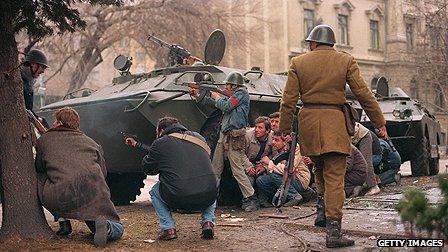
The people of Romania rose up against the government at a time of upheaval in the region
1990 May - Government embarks on economic and political reform programme.
1990 June - Student and opposition protests against ex-communist leadership crushed when 20,000 miners are brought in to stage a counter demonstration.
1991 - Riots by miners on strike over soaring prices force Prime Minister Petre Roman's resignation. 1996 - Centre-right election victory sweeps aside former communists. Emil Constantinescu elected president, Victor Ciorbea becomes prime minister.
1997 - Economic reform programme announced. Securitate Communist-era secret police files opened.
1999 January - Security forces prevent 10,000 miners striking over pay from entering Bucharest.
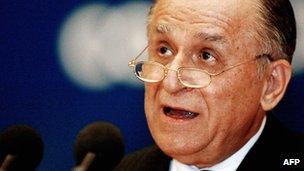
Ex-communist Ion Iliescu was president for four years after the fall of Ceausescu and again in 2000-4
2000 November-December - Ion Iliescu defeats far-right rival Corneliu Vadim Tudor to retake presidency. Leftist Adrian Nastase becomes prime minister in minority government.
Path to EU membership
2004 March - Romania admitted to Nato.
2004 November-December - Centrist alliance leader Traian Basescu elected president. Ally Calin Tariceanu becomes prime minister with agenda of speeding up EU-oriented reforms.
2005 April - Romania signs EU accession treaty.
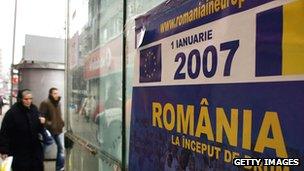
Romania became an EU member in 2007
2007 January - Romania and Bulgaria join the European Union.
2008 February - European Commission warns Romania over high-level corruption.
Financial crisis
2009 March - The International Monetary Fund and other lenders agree to provide Romania a rescue package worth 20bn euros.

Austerity measure prompted protests and clashes with the police
2012 January-February - Clashes over austerity and corruption prompt resignation of Prime Minister Emil Boc.
2012 May - Victor Ponta becomes prime minister when his left-wing Social Liberal Union alliance topples the interim government.
2014 November - Conservative Klaus Iohannis beats Victor Ponta in presidential run-off election.
2015 November - Victor Ponta resigns as prime minister after months of scandal, culminating in mass street protests over lax safety regulations at a nightclub where 32 people died in a fire.
2016 May - A Nato missile defence system is installed in the face of Russia opposition.
2017 January - Social Democrats form government after winning December 2016 elections.
2017 February - Some 200,000 people protest over government attempts to water down corruption measures, in largest demonstrations since fall of Communist regime in 1989.
2019 November - Centrist Ludovic Orban becomes prime minister after Social Democrats lose vote of confidence.
2020 December - Defence Minister Nicolae-Ionel Ciuca becomes acting prime minister on the resignation of Ludovic Orban over poorer-than-expected election results.